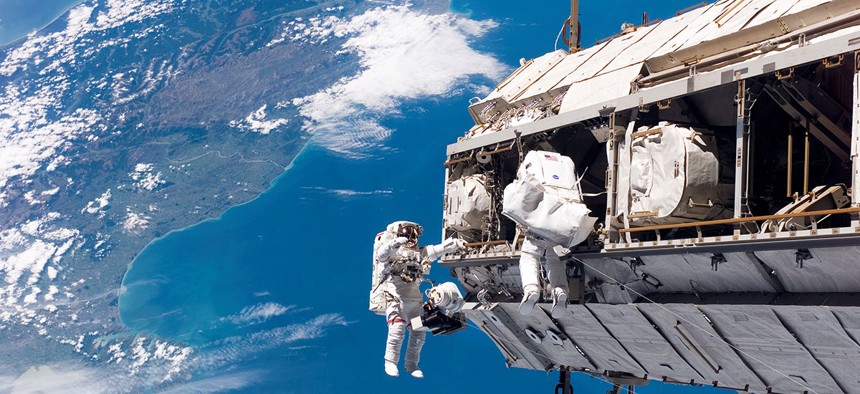
NASA and ESA astronauts conduct a spacewalk in 2006. NASA file photo
NASA is Hiring Astronauts
The last time NASA opened up astronaut applications, in 2012, it received over 6,000 responses
Are you an American citizen of average height with at least a bachelor’s degree in engineering, science, or mathematics from an accredited institution and three years of related experience? If so, you likely qualify to be a NASA astronaut!
Brush up your resumé: Applications for the next round of astronaut candidates open on Dec. 14.
The last time NASA opened up astronaut applications, in 2012, it received over 6,000 responses—the most since 1978. This round could solicit even more than that, given how increasingly popular the US space agency has become. Plus, the possibility of a paid trip to another planet is an indisputable corporate perk.
“This next group of American space explorers will inspire the Mars generation to reach for new heights, and help us realize the goal of putting boot prints on the Red Planet,” said NASA administrator Charles Bolden, in a statement. “Those selected for this service will fly on U.S. made spacecraft from American soil, advance critical science and research aboard the International Space Station, and help push the boundaries of technology in the proving ground of deep space.”
The requirements to be an astronaut are less intense than most might expect. Pilots candidates must have 1,000 hours flying a jet aircraft, while mission specialists needs at least three years of professional experience in their fields. (You don’t have to have a military background, though the majority of pilots do have military experience.) NASA prefers that you have an advanced degree of some kind, but that’s not a requirement.
You’ll also need to pass a NASA space physical and prove you have good eyesight and blood pressure, and are roughly between 59 and 76 inches tall 150-193 centimeters). There isn’t much headroom on spaceships.
While it might seem like an exciting time for spaceflight, it’s actually not—at least, historically speaking. During the space shuttle heyday in the early 2000s, NASA had 149 active astronauts. Today, it only has 47. The only real opportunity for NASA astronauts to go into space today is aboard the International Space Station.
To do much else, candidate will have to be patient. As far as human spaceflight goes, NASA is singularly focused on sending astronauts to Mars over the next several decades. The first manned test flight of the Orion spacecraft—which will orbit the moon—is set for 2021. A few years after that, astronauts aboard Orion will explore an asteroid. And if all goes according to plan, humans will walk on the surface of Mars in the 2030s.
Start writing your cover letters, but don’t get your hopes up. According to Wired, the odds of being accepted into the NASA astronaut candidate program are less than 0.17%. In other words, not good.






